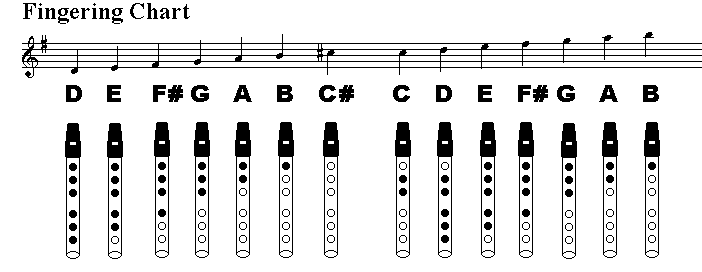FAQ Question
-
Question
-
How do I get started?
-
Answer
-
There are a number of good tutorials. I started with the Bill Ochs book and cassette tutorial, The Clarke Tinwhistle. If you want something free and on the internet, you can also try Brother Steve's Tinwhistle Page as a good free learning resource, Michael Eskin's Tradlessons.com is another, with close-up videos of the whistle playing.
And if you're just looking for a finger chart to get you going, I've got you covered!

Be aware that the accepted way to hold the whistle is with the
right hand on the bottom three notes, and the left hand covering the top
three notes. Also be aware that I hold the whistle backwards from that (right hand on top), and a number of top notch players do too, such as Mary Bergin. The only good argument I've ever heard for holding it left-on-top is "so you can play flute later if you want to". They're right. You'll have to play left-handed flutes if you play whistle with your right hand on top. So take that for what it's worth.
You should provide solid pressure on the holes to ensure good
coverage, though you shouldn't make your knuckles white!
The first three fingers of each hand is used, and the pinkie finger of
the right hand provides balance on notes such as C sharp, where all of
the holes are open. Practice regularly and you'll find yourself making
the notes without any conscious effort.
Second octave notes are made by overblowing (blowing harder
into the whistle). The third octave can be reached with special fife
fingerings, but this shouldn't be necessary for most traditional Celtic
music. Please note the fingering for high D. This can also
be fingered with all holes closed, but it can be harder to get a clean sounding
high D. I use both fingerings, depending on what tune I'm playing,
and which fingering fits the "flow" of the notes.
Back to List
